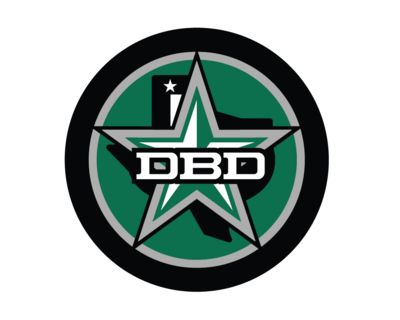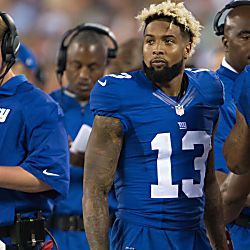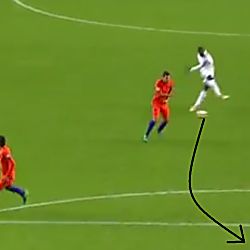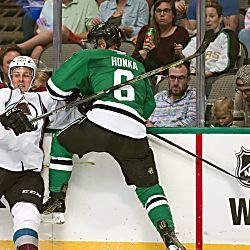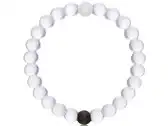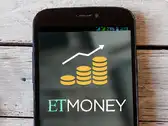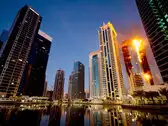Galileo Continues to Eclipse Rivals
thoroughbreddailynews.com

This year it is fair to say that Galileo has totally eclipsed his rivals. According to the Racing Post’s statistics after the weekend, his progeny earnings in Britain and Ireland stood at £9,333,156, which put him nearly £6.5 million ahead of his nearest rival. Extend the statistics to include the rest of Europe and it becomes an even more vivid example of Galileo first, the rest nowhere, as his lead stretches to nearly £9.9 million following his Arc 1-2-3.
There can be no doubt now that Galileo will shortly record his eighth sires’ championship in the space of nine years. He owed the latest boosts to his phenomenal total to his daughters Rhododendron (Ire) and Hydrangea (Ire), who took first and second places in the G1 Fillies’ Mile, and to his imposing son Churchill, winner of the G1 Dewhurst S. (on the day that Galileo’s daughter Photo Call (re) shocked Tepin at Keeneland).
Rhododendron follows Together Forever and the excellent Minding as Galileo’s third consecutive winner of the Fillies’ Mile., whereas Churchill is his fourth winner of the Dewhurst, after Teofilo, New Approach and Frankel. Of course, Teofilo and New Approach have also sired Dewhurst winners, meaning that sons or grandsons of Galileo have taken six of the last 11 editions of this championship race.
Although Galileo could never have been described as a one-trick pony, there was a time when his success as a stallion depended heavily on his partnership with Danehill mares, with Teofilo and Frankel helping set the trend. This nick is still very much alive and kicking, with the likes of the G1 King George winner Highland Reel and the GI Belmont Derby winner Deauville adding to its highest-level successes in 2016. Equineline credits it with 40 black-type winners from a total of 240 foals, which equates to 17%.
And the number of black-type winners looks set to soar even higher. No fewer than 26 members of Galileo’s current yearling crop have dams by Danehill, as do at least 16 members of his 2016 foal crop. One of those 26 yearlings recently sold for 1,350,000gns and this crop also contains brothers or sisters to five of the nick’s Group 1 winners: Intello, Deauville, Highland Reel, Roderic O’Connor and Tapestry. There’s a brother to champion 2-year-old filly Maybe among the 2016 foals.
Fortunately, the last couple of seasons have reminded everyone that Galileo is by no means dependent on just one narrow set of bloodlines. Admittedly, one of the success stories has concerned mares by Danehill’s son Danehill Dancer. They have already produced those notable three-year-olds Minding, The Gurkha and Alice Springs, winners of 10 Group 1 races between them. Once again the tally looks set to soar, as 15 of Galileo’s yearlings have dams by Danehill Dancer, as do at least 10 of his foals. The yearlings include sisters to Minding, The Gurkha and Alice Springs, with the sister to Alice Springs selling for 2,100,000gns last week. I should add that the GI First Lady S. winner Photo Call has a dam by Rock of Gibraltar, another of Danehill’s sons.
But, as last week’s Group 1 2-year-old events at Newmarket demonstrated, there are other options capable of producing truly formidable results with Galileo. Rhododendron has a dam by Pivotal, while Churchill is out of a Storm Cat mare.
Daughters of the veteran Pivotal have a very eye-catching record with Galileo. Twelve of them have produced 26 Galileo foals of racing age. Twenty-one have raced, 17 have won and Rhododendron is the fifth to become a Group winner. That’s 19% Group winners, not black-type winners. Another member of the quintet, The United States, won the G1 Ranvet S. in Australia earlier this year. It is worth mentioning that most of the Pivotal mares involved were themselves well above average. Rhodedendron, a sister to the Group 3 10-furlong winner Flying The Flag, is out of Halfway To Heaven, winner of the Irish 1,000 Guineas and two other Group 1 races. The United States–a brother to Fillies’ Mile runner-up Hydrangea–is out of Beauty Is Truth, a Group 2-winning French sprinter. The Group 2 winner Gospel Choir is out of Chorist, winner of the G1 Pretty Polly S., while the fifth Group scorer, the Jebel Ali Mile winner Silver Galaxy, is out of a Listed winner.
Unlike the Danehill and Danehill Dancer crosses, the Pivotal nick doesn’t have a lot of ammunition for the future, with just three yearlings and two foals. However, they include a brother and a sister to The United States and Hydrangea and a sister to Rhodedendron.
Moving on to the Storm Cat cross, this too is rather under-represented, with just five yearlings and three foals. Fortunately the yearlings include sisters to the star colts Churchill and Gleneagles and the foals feature a brother to Churchill.
The total statistics for the Galileo-Storm Cat alliance are that 23 daughters have 49 foals of racing age. Thirty-nine have started, 26 have won and 10 have enjoyed black-type success. These 10 are headed by five Group 1 winners, a Group 2 winner and two Group 3 winners, which equates to over 16% Group winners. This figure sounds even more impressive when I add that the classic winners Gleneagles, Misty For Me and Marvellous are among the five Group 1 winners, which also include Ballydoyle, runner-up to Minding in this year’s 1,000 Guineas.
Churchill clearly has a lot to live up to when he lines up for next year’s 2,000 Guineas, for which he was priced at 2-1 immediately after his Dewhurst victory.
It is going to be fascinating to see how much improvement there is in Churchill. His trainer Aidan O’Brien is in no doubt that Churchill still hasn’t revealed the full extent of his talent. In the role of devil’s advocate, I should mention that, with a Jan. 31 birthday, Churchill is the eldest of the seven Dewhurst runners by a margin of at least six weeks, and is nearly four months older than Seven Heavens. Will some of the others close the gap over the winter? Aidan O’Brien described Churchill as a big and physically very imposing–“probably more imposing a 2-year-old than we’ve ever trained. He’s massive, he’s big, powerful with a great mind."
Churchill has now won his last five starts, successfully negotiating each step of the Pattern Race ladder. Having won at Listed, Group 3 and Group 2 levels, he was at his most impressive in gaining his Group 1 victories in the National S. (by more than four lengths) and the Dewhurst. He is clearly very progressive and the same could be said for the female line which produced him.
Churchill’s dam Meow also exhibited plenty of precocity during an all-too-brief career, She led for much of the way when beaten only a neck in the G2 Queen Mary S. and then was never headed when she took a five-furlong Listed race at the Curragh. Possibly something went wrong with her in the G2 Flying Childers S., as she dropped out quickly and never raced again.
Meow represented the first major dividend from the 550,000gns paid for her dam, the G1 Cheveley Park S. winner Airwave, as a 4-year-old. Rather like Red Evie, a fellow Group 1 winner who produced the recent Arc winner Found, Airwave arguably offered much more performance than pedigree. By Air Express from a family which used to be in the Non-Thoroughbred Register, Airwave had cost only 12,000gns as a yearling at Doncaster.
By the time of her sale as a 4-year-old Airwave had raced
19 times, exclusively over five and six furlongs, and she had done extremely well, often holding her own against the males in the top sprints. She won the G2 Temple S. at three, when she was also a close second to Choisir in the G1 Golden Jubilee and a fine third behind Oasis Dream in the G1 July Cup. Her new owners tried her over longer distances as a mature 5-year-old and she justified the move with a victory in the G2 Ridgewood Pearl S. over a mile.
That victory reinforces the view that Churchill will have no trouble staying a mile next year. However, it is hard to envisage him as a Derby colt, even though Galileo sired the Irish Derby winner Cape Blanco from a five-furlong specialist. Churchill is closely related to Aloof and Orator, two stakes winners by Galileo out of Airwave. Both won at around a mile and a quarter, with the tough Aloof scoring at Group 3 level. Aloof was later sold for $3,900,000, carrying a filly by War Front.
On the whole, this family is noted for its speed. Jwala, Airwave’s half-sister by Oasis Dream, won the G1 Nunthorpe over five furlongs. Churchill’s third dam Kangra Valley was a five-furlong two-year-old winner and the next dam, Thorner Lane, was a dual five-furlong winner. Fifth dam Spinner was a half-sister to the very speedy Clantime, a winner of nine races over the minimum

Posted on October 11th, 2016
» Big Score Lives Up to His Name in the Zuma Beach
Big Score Lives Up to His Name in the Zuma Beach
| 9th at San, $100,000 | Zuma Beach S. | (1m) | Winner: Big Score, c, 2 by Mr. Big |
ZUMA BEACH S., $102,415, SA, 10-10, 2yo, 1mT, 1:33.56, fm.
1–#BIG SCORE, 120, c, 2, by Mr. Big
1st Dam: Not Unusual, by Unusual Heat
2nd Dam: Fly First Class, by General Meeting
3rd Dam: Laura’s Jet, by Wajima
O/B-George Krikorian (KY); T-Tim Yakteen; J-Flavien Prat.
$60,000. Lifetime Record: 3-2-1-0, $117,800.
2–Sonic Boom, 118, c, 2, More Than Ready–Silent Circle, by
Indian Charlie. ($135,000 Ylg ’15 KEESEP). O-Lothenbach
Stables, Inc.; B-Athens Woods, LLC & More Than Ready
Syndicate (KY); T-Ian R. Wilkes. $20,000.![]() 3–Ventry Bay, 118, c, 2, Scat Daddy–Raffishing Look, by
3–Ventry Bay, 118, c, 2, Scat Daddy–Raffishing Look, by
Kingmambo. ($325,000 Ylg ’15 KEESEP). O-Ice Wine Stable,
Susan Magnier, Michael Tabor & Derrick Smith; B-Gainesway
Thoroughbreds Ltd. (KY); T-Wesley A. Ward. $12,000.![]()
![]() Margins: 3 1/4, HF, NO. Odds: 4.80, 4.30, 12.30.
Margins: 3 1/4, HF, NO. Odds: 4.80, 4.30, 12.30.
Also Ran: Harbour Master (GB), Oopper Wallah, Offshore, Billy Big (Ire), Bowies Hero, Riser, Colonel Samsen, Secret House, Sorry Erik. Scratched: Toshiro.
Big Score, a maiden winner going one mile over the Del Mar lawn July 24, was second behind the reopposing Bowies Hero going the same distance in the Sept. 3 Del Mar Juvenile Turf S. The dark bay colt angled over from his outside post and settled in mid-pack early while three wide as Riser (Mizzen Mast) zipped through fractions of :21.89 and :44.83. He made rapid progress on the final bend and powered to the lead in upper stretch and spurted clear for an authoritative victory. “I think he can handle more distance," admitted winning trainer Tim Yakteen. “I definitely don’t think distance will be any concern. I think he showed that he’s not one dimensional today. He doesn’t have to come from completely out of it. The pace was substantially faster today, the first part of the race, and Flavien [Prat] kept him a little closer but it didn’t seem to compromise his kick. He still had a pretty good kick." The win had owner/breeder George Krikorian dreaming of a return to Santa Anita next month. “The way he’s been running, we thought he’d run well today," Krikorian said. “We’ll definitely point him now to the million-dollar race [GI Breeders’ Cup Juvenile Turf Nov. 4.]" Krikorian campaigned the winner’s sire, two-time winner Mr. Big (Dynaformer). “These horses by Mr. Big are showing a lot of promise," he said. “I moved him to E.A. Ranches in Ramona for this year and he was bred to 39 mares. If he keeps going the way he is, he could be the best son of Dynaformer at stud." Mr. Big is \fs21softlinealso the sire of graded stakes placed Big Book. Not Unusual, purchased by Krikorian for $67,000 at the 2007 Barretts October Yearling sale, produced a filly by Mucho Macho Man this year and was bred back to Mr. Big. Click for the Equibase.com chart or VIDEO, sponsored by Fasig-Tipton.
Not a subscriber? Click here to sign up for the daily PDF or alerts.

Posted on October 11th, 2016
Peter Schiff: Recession is Coming Soon, Whether Fed Likes it or Not
Currently economists and market watchers roughly fall into two camps: Those who believe that the Federal Reserve must begin raising interest rates now so that it will have enough rate cutting firepower to fight the next recession, and those who believe that raising rates now will simply precipitate an immediate recession and force the Fed into battle without the tools it has traditionally used to stimulate growth. Both camps are delusional, but for different reasons.
Most mainstream analysts believe that the current economy can survive with more normalized rates and that the Fed’s timidity is unwarranted. These people just haven’t been paying attention. The “recovery" of the past eight years hasn’t been just “helped along" by deeply negative real interest rates, it is a singular creation of those policies. Since June 2009, when the current recovery began, traditional economic metrics, such as GDP growth, productivity, business investment, labor force participation, and wage growth, have all been significantly below trend. The only strong positives have been gains in the stock, bond and real estate markets. We have had an “asset price" recovery rather than a bona fide economic recovery. This presents unique risks.
Asset price gains have been made possible in recent years because ultra-low rates have driven down the cost of borrowing, encouraged speculation, and pushed people into riskier assets. Donald Trump was right in the presidential debate when he noted that the whole economy is “a big fat ugly bubble." Any rate hike could hit those markets hard across the financial spectrum and can tip the economy into contraction. Look what happened this January when the market had a chance to digest the first rate increase in 10 years. The 25 basis point increase in December 2015 led to one of the worst January’s in the history of the stock market. Since then, the Fed has held off from further tightening and the markets have treaded water. There is every reason to believe that the sell-off could resume if the Fed presses ahead.
Our current “expansion,“ which began in June of 2009 is 88 months old, and is already the fourth longest since the end of the Second World War (post-war expansions have averaged 61 months) (based on data from National Bureau of Economic Research and Bureau of Labor Statistics). But although it is one of the longest it has also been the weakest. Despite fresh optimism nearly every year, we have not had a single year of 3 percent GDP growth since 2007. More ominously, the already weak expansion is beginning to slow rapidly. GDP growth has been decelerating, averaging just 1% in the past three quarters. (Bureau of Economic Analysis) And while hopes were high for a significant rebound in Q3, as has been the pattern all year, rosy estimates have recently been sharply reduced.
Typically rate-tightening cycles start in the early stages of a recovery when the economy is still gathering momentum. As I have argued before, a rate tightening campaign that begins in the decelerating tail end of an old and feeble recovery is bound to unleash problems.
So I agree with those who believe that rate hikes now will bring on recession, but I disagree that we should keep rates where they are. They believe we need to keep the stimulus pedal to the metal…and when that’s not enough, to cut a hole in the metal and push harder. I believe that despite the short term pain that will surely follow, we need to raise rates now to break the addiction before it gets worse.
The “keep rates at zero camp" argues that global economic developments have made traditional GDP growth nearly impossible to achieve. These believers in “the new normal" fear that the Fed is mistakenly waiting for growth that will never come. Larry Summers, the leader of this group, recently argued in the Washington Post that the Fed will never be able to raise rates enough in the short term (without plunging the economy into recession) to gather enough ammunition to effectively fight the next recession. In his view, to raise rates now would be to risk everything and get nothing.
Summers knows that central bankers now do not have the caliber of bazookas that their predecessors once carried (Bernanke was able to slash interest rates over 400 basis points in a few months). So he advocates continued stimulus until newer means can be developed to head off the next recession before it develops. (He promises to reveal those new ideas soon…really).
Given all the economic realities that central banking has attempted to suspend in recent years (such as the antiquated belief that lenders should be paid to lend rather than being charged for the privilege), it’s no great stretch for them to consider the next big leap and call for an age of permanent expansion.
To do this they must short-circuit the business cycle, which up until now has regulated prior monetary mismanagement. Rather than being some naturally occurring process, the business cycle actually results from artificially low interest rates. Mistakes are made during the booms, when rates are held artificially low, and are then corrected during the bust, once those rates are allowed to normalize. Ironically, the busts are actually the benign part of the process, and should not be resisted, but embraced. But to mitigate the short-term pain associated with actually correcting those mistakes, central banks typically opt to paper them over for as long as possible. The problem is that this time the papering over process has gone on for so long, and involved a record amount of paper, that correcting the mistakes now will necessitate a recession so severe that it is unthinkable. The only apparent “solution" is to make sure one never arrives.
To do so Fed must replace the “ups and downs" of the economy with the “ups and ups." This futile process will likely involve the Fed intervening directly in the equity markets (by actually buying shares), or in the real estate market (by buying properties or making loans) or into the consumer economy by directly distributing money to citizens. But since contractions are necessary and healthy, especially when markets have gotten ahead of themselves, attempting to short-circuit them does more harm than good. Yet despite how crazy such a policy sounds, Yellen just suggested that she thinks it’s not only a good idea, but that the Fed is already giving it serious study. Given the damage our crazy monetary policy has already inflicted in the past, one can only imagine what kind of devastation awaits.
Just this week the International Monetary Fund issued a report about the dangers of global debt growth, which has reached $152 Trillion, or roughly twice the size of global GDP. They noted that the growth of private debt has recently led the upswing. With negative rates actually paying some companies to borrow, should this be a surprise? And while it’s nice that the IMF raised a red flag, it’s pathetic that their only proposed solution is to call for governments to increase public debt through fiscal stimulus (based on what should now be the debunked theory that deficit spending creates growth).
Even more pathetic is Alan Greenspan attempt on CNBC this week to blame the current low growth economy on Congress, and its failure to reign in entitlements. Greenspan is correct in his determination that “the new normal" results from the plunge in productivity gains that is a function of drops in savings and capital investment. But he can’t absolve the Fed. Had they not monetized the ever growing Federal deficits, or kept interest rates artificially low for so long, market forces would have forced cuts in entitlement spending years ago. These actions, originated with Greenspan himself, enabled Congress to repeatedly kick the can down the road.
According to Greenspan, to spare the public the pain of higher interest rates the Fed has no choice but to hold its nose and accommodate any level of debt Congress chooses to accumulate. But the ability to pursue unpopular policy is precisely they are supposed to be politically independent. What good is an independent central bank that simply helps incumbents win reelection?
Given that the Fed has already unsuccessfully exhausted so much firepower, it is unfortunate that it never seriously questions whether their policies are actually harmful. Modern economists simply can’t imagine that throwing ever more debt on the back of a weak economy actually prevents it from recovering.
I think it’s high time the Fed finally moves rates well into positive territory. The next recession has been on its way for years, and it will arrive no matter what the Fed does, if it’s not already here. Sometimes reality hurts, but fantasy can be more damaging in the long run.
The real choice is not between recession now or recession later. It’s between a massive recession now, or an even more devastating one later. Either way, there is no Fed policy that will be able to fight it. But that is not because the Fed is out of bullets, but because it never had any real bullets to fire in the first place. All it had was morphine to numb the pain as the wound festered. Now is the time to bite the bullet, endure the pain, and allow the wound to actually heal. This will also allow us to finally bury the idea of a new normal, enjoy a real recovery with all of its traditional benefits, and actually make America great again.
The SPDR Dow Jones Industrial Average ETF (NYSE:DIA) rose $0.53 (+0.29%) to $182.75 per share in premarket trading Monday. Year-to-date, the only exchange traded fund that tracks the DJIA has risen 4.9%.
This article is brought to you courtesy of Euro Pacific Capital.

Posted on October 11th, 2016
Want to become rich? Invest in our Mutual Fund Portfolios - The Economic Times on Mobile
Want to become rich? Invest in our Mutual Fund Portfolios
That excuse is no more valid. ET.com has created a few mutual fund portfolios for investors with different risk profiles as well as SIP investment amounts. The three risk profiles chosen are: conservative, moderate and aggressive. We have also considered three SIP baskets: Rs 2,000-5,000, Rs 5,000-10,000 and above Rs 10,000. We have only considered equity diversified and equity-oriented balanced funds for the purpose of recommendation. We have also assumed that the investor is investing with an investment horizon of five years.
ET MF has employed the following parameters for short-listing the mutual funds.
1. Mean Rolling returns rolled daily for the last 3 years
2. Consistency for the last 3 years : The 3 year period is divided into smaller time periods each with a progressing weighting.
3. Downside risk : In this case, we have considered only the negative returns given by the mutual fund scheme.
X =Returns below zero
Y = Sum of all squares of X
Z = Y/number of days taken for computing the ratio
Downside risk = Square root of Z
4. Outperformance : Measured by Jensen's Alpha for the last three years. Jensen' Alpha shows the risk-adjusted return generated by a mutual fund scheme relative to the expected market return predicted by the Capital Asset Pricing Model (CAPM). Higher Alpha indicates that the portfolio performance has outstripped the returns predicted by the market.
Average return generated by the MF Scheme - [Risk Free Rate + Beta of the MF Scheme * {(Average return of the index - Risk Free Rate}]
5. Asset Size: For equity diversified funds, the threshold asset size is Rs 100 crore, whereas the threshold corpus taken is Rs 50 crore for balanced funds.
Mutual Fund queries answered by Manoj Nagpal, CEO, Outlook Asia Capital
Juzer M
You have a medium term goal with a definite time frame which cannot be realigned in case of sudden market volatility at the beginning of your post-graduation. To plan for such goals, one should ideally build an investment vehicle which will guard against sudden market movements, especially closer to the time frame. You have chosen Kotak Emerging Equity Scheme which has a smallcap and midcap orientation and at the end of 3-4 years you should reduce the risk in your portfolio by realigning the risk to lower volatility asset class and turn to a savings mode. To achieve your goal, you will need to increase your investment amount.
I am 57 years old, due to retire in 2019. I wish to start a SIP for Rs 3,000-5,000 per month to build a corpus, however small, for my school-going son. Please suggest some equity-based mutual funds.
Manhar Shukul
Since you have a 3-year investment period but a longer investment horizon for your son, it will be prudent to build a portfolio which can take advantage of longer term trends. You could consider a multi-cap fund like DSP Opportunities Fund as the core holding flanked by two diversified trend funds like Birla GenNext Fund and Sundaram Rural India Fund. On the other hand, if your time horizon is shorter at around 5-7 years, only then you could consider adding the Birla Advantage Fund and Quantum Long Term Equity Fund instead of the later two trend funds.
I started investing in mutual funds (Rs 1,500 in each fund) 2 years back. Please suggest/advice on my SIP portfolio as below: Franklin Build India Fund (since February 2015), Franklin High Growth Companies Fund (since February 2015), SBI BlueChip Fund (since December 2014), SBI Small & MidCap Fund (since December 2014), Canara Robeco Emerging Equities Fund (since January 2016), Axis Equity Fund ELSS (since April 2016). Kindly advise if these funds are good enough or do I need to change them?
Rahul Dev Singhal
You could consider consolidation of your SIPs and simultaneously reducing the midcap component in your investments if you wish to reduce volatility and risk of the portfolio. With these objectives you should increase the SIP amounts in Franklin Build India Fund, SBI BlueChip Fund and discontinue the Franklin High Growth Cos, SBI Small & MidCap Fund and Axis Fund. You can continue the Canara Robeco Emerging Equities Fund as the midcap exposure. With this strategy, you will reduce the risk, weed out the lesser performers and consolidate your portfolio for better management.
(Send your queries on mutual funds to et.mfs@timesgroup.com)

Investing in small-cap or mid-cap funds? Check their liquidity
Heading towards a liquidity trap
Data from Crisil suggests that some mid- and small-cap funds have seen their liquidity profile deteriorate over the past year. Crisil’s portfolio liquidity score measures the ease with which a portfolio can be liquidated. The lower the score, the better it is. In simple terms, it measures the number of days it would take to liquidate the entire portfolio.
Mid- and small-cap funds have seen their liquidity score climb from 9.01 to 11.91 over the past one year. This means that the funds would take on an average up to 12 days to liquidate their entire portfolios at this juncture. Some funds have a liquidity score in excess of 25 days (see table). In contrast, large-cap funds have a liquidity score of 1.1—nearly unchanged from a year ago—implying that a fund will take just a day to liquidate its positions. Diversified equity funds, also known as multi-cap funds, also have a relatively stable liquidity position.
Jiju Vidyadharan, Director, Funds and Fixed Income Research, Crisil, feels liquidity is not a concern at this point. “We do not see a significant trend towards illiquid stocks for now. The portfolio liquidity score is partly an outcome of the increase in size of the funds." Manoj Nagpal, CEO, Outlook Asia Capital, however, says the liquidity position of mid- and small-cap funds could be far worse than what is visible now. “Liquidity in mid- and small-cap stocks can vary significantly during bull and bear phases. Right now, the liquidity is comfortable as this segment is in the grips of a bull market. But when the music stops, these can lose liquidity rapidly and at that time, the liquidity position of funds will be worse than it is now."
But why should you as an investor be bothered about a fund’s liquidity position? Liquidity refers to how easily the shares can be bought or sold in the market without significant loss of value. If a fund has too many illiquid stocks in its portfolio, the fund manager will be in trouble in the face of large scale redemptions. Unlike a large cap fund, the fund manager of a mid- or small-cap equity fund has to grapple with the liquidity position of his portfolio. This is because, apart from a few counters, most stocks in this segment do not enjoy healthy trading volumes on the exchanges. When redemptions are high, fund managers can meet the cash requirement by either selling some of the better performing stocks that have enough liquidity, or dumping any of the liquidity-starved stocks at lower prices.
The latter scenario can really hurt a fund’s return profile. Roopali Prabhu, Head of Investment Products, Sanctum Wealth Management, points out, “Exiting the illiquid positions in an adverse market may have a higher impact cost for the fund." Some experts say fund managers have recently admitted that the actual realisable NAV (net asset value) of the fund is lower than the current NAV, owing to the liquidity overhang.
Ensuring liquidity can be particularly tricky as the fund corpus swells in size. When the size of the fund goes up, the fund manager may be forced to diversify his holdings by including more stocks in his portfolio. But there are only limited investible opportunities in this segment. After the relentless uptick in prices of mid- and smallcap stocks over the past few years, quality investible ideas are scarce. But as the fund continues to attract more inflows, the fund manager may resort to hunting lower down the market capitalisation ladder for high alpha ideas as valuations for existing high quality stocks are already rich. This presents a liquidity trap for the fund, apart from the quality dilution in the portfolio.
The other option for the fund manager is to put more money into large-caps that offer sufficient liquidity but could potentially dilute the return profile of the fund. But experts contend that funds should be using another alternative in the current scenario—to stop accepting further investor money into the funds. Recently, DSP BlackRock Micro Cap and SBI Small and Midcap exercised this option. With fresh inflows restricted, the fund manager can manoeuvre the existing portfolio without having to worry about deploying money in an already heated market.
(%)
(%)
(%)
(%)
(%)
- Top rated funds sorted on 1 year return.
- Returns less then 1 year are absolute and above 1 year are annualised.
5 smart things to know about functions of a fund manager
2. Fund manager also make the asset allocation decisions and the securities buy and sell decisions based on the investment objective of the fund.
3. Fund managers are judged by how well their fund performs. At the least, they need to deliver growth exceeding interest and inflation rate and the fund benchmark, to justify the risk of investing.
4. On a daily basis, fund managers are in charge of placing orders and buying or selling individual stocks and bonds from the portfolio, as well as managing cash flows and redemption.
5. Fund managers must also ensure that their funds operate in accordance with the regulations outlined by Sebi, and that their funds’ reporting requirements are met.
(The content on this page is courtesy Centre for Investment Education and Learning (CIEL). Contributions by Girija Gadre, Arti Bhargava and Labdhi Mehta.)
Should you invest in Sovereign gold bonds or gold ETFs?
Both the gold bonds and ETFs will allow Sunita to invest in gold on paper, rather than buy physical gold. But she must remember that even though the gold bonds are backed by the Government of India, the returns are linked to price movements in gold, and are therefore not guaranteed. In this respect, both ETFs and sovereign bonds carry similar market risk. The values of the gold bonds and ETFs are based on the gold price of .999 purity and .995 purity respectively.
A key differentiator for sovereign gold bonds is the feature of an additional interest of 2.75% per annum, which is computed based on the investment value of gold. This interest on the gold bond is accumulated over and above the appreciation in the value of gold. Further, the costs involved in ETF investments (demat charges, brokerage and expense ratio) would essentially lower Sunita’s investment amount, and in turn, her return.
In order to mitigate risks from any steep price corrections closer to the redemption date, the bonds would provide Sunita the option of rolling over her investment for a further period of at least three years. If Sunita were to redeem these bonds at maturity, her capital gains would be tax-free. However, in terms of capital gains arising out of trading, gold bonds and ETFs are on a level playing field. The interest income earned from the bonds will be subject to taxation, similar to a bank deposit. However, no TDS is applicable to the interest earned from these bonds.
Since Sunita intends to save for her daughter’s wedding, the bonds are the better option for her, because they will allow her to accumulate gold at a lower cost, with additional interest and tax benefits. However, if she wants to buy smaller denominations than a gram, she would have to opt for gold ETFs. Either way, her investment will be subject to market risks.
( The content on this page is courtesy Centre for Investment Education and Learning (CIEL). Contributions by Girija Gadre, Arti Bhargava and Labdhi Mehta .)

Posted on October 11th, 2016
Hedge Fund Manager Lays Out His Simple Case for Why Twitter Will Still Get Sold

Posted on October 11th, 2016
Cleveland Indians Troll Boston Red Sox On Twitter After Win In ALDS « CBS Detroit
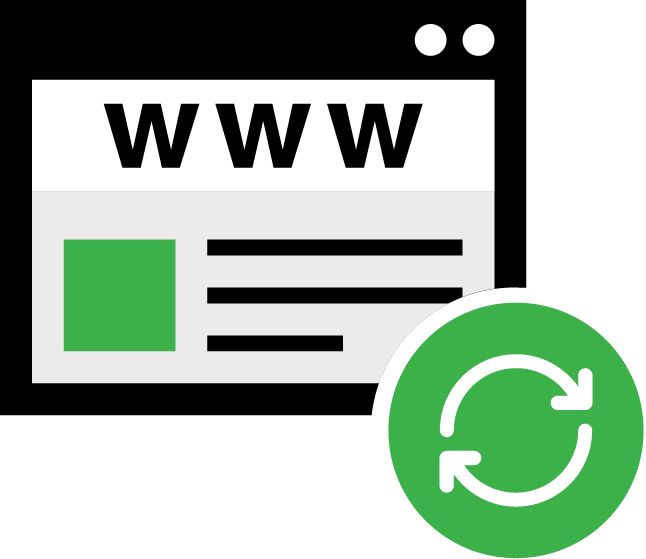
Clipping…

Posted on October 11th, 2016
Best ETFs to Buy Right Now | ETF Daily News
Best ETFs List
The following ETFs are in exclusive company by holding a POWR Rating™ of A (Strong Buy). These ETFs, which are sorted by AUM, are thus suitable for both long- and short-term investors and traders targeting high-performing ETFs with big upside potential.
ETF Symbol/NameQQQ PowerShares QQQ Trust Last118.30 Day Chg-0.92 (-0.77%) YTD Chg5.94% AUM39.68B Exp. Ratio0.20% POWR Rating
A Strong Buy | ||||||||||||
ETF Symbol/NameBIV Vanguard Intermediate-Term Bond Index Fund Last86.75 Day Chg-0.14 (-0.16%) YTD Chg7.54% AUM11.01B Exp. Ratio0.09% POWR Rating
A Strong Buy | ||||||||||||
ETF Symbol/NameVCIT Vanguard Intermediate-Term Corporate Bond Index Fund Last88.74 Day Chg-0.18 (-0.20%) YTD Chg8.38% AUM10.25B Exp. Ratio0.10% POWR Rating
A Strong Buy | ||||||||||||
ETF Symbol/NameEMB iShares JPMorgan USD Emerging Markets Bond Fund Last115.79 Day Chg-0.99 (-0.85%) YTD Chg11.32% AUM9.50B Exp. Ratio0.40% POWR Rating
A Strong Buy | ||||||||||||
ETF Symbol/NameIWN iShares Russell 2000 Value Index Fund Last103.97 Day Chg-0.83 (-0.79%) YTD Chg13.84% AUM6.90B Exp. Ratio0.25% POWR Rating
A Strong Buy | ||||||||||||
ETF Symbol/NameIWO iShares Russell 2000 Growth Index Fund Last147.37 Day Chg-1.63 (-1.09%) YTD Chg6.42% AUM6.79B Exp. Ratio0.25% POWR Rating
A Strong Buy | ||||||||||||
ETF Symbol/NameBKLN PowerShares Senior Loan Portfolio (Fund) Last23.20 Day Chg-0.02 (-0.09%) YTD Chg6.94% AUM5.66B Exp. Ratio0.65% POWR Rating
A Strong Buy | ||||||||||||
ETF Symbol/NameBNDX Vanguard Total International Bond ETF Last55.50 Day Chg+0.03 (0.05%) YTD Chg6.76% AUM5.64B Exp. Ratio0.15% POWR Rating
A Strong Buy | ||||||||||||
ETF Symbol/NameMINT PIMCO Enhanced Short Maturity Exchange-Traded Fund Last101.35 Day Chg-0.02 (-0.02%) YTD Chg1.14% AUM4.98B Exp. Ratio0.35% POWR Rating
A Strong Buy | ||||||||||||
ETF Symbol/NameVXF Vanguard Extended Market ETF Last90.02 Day Chg-0.79 (-0.87%) YTD Chg8.62% AUM4.08B Exp. Ratio0.09% POWR Rating
A Strong Buy | ||||||||||||
ETF Symbol/NameSHV iShares Barclays Short Treasury Bond Fund Last110.37 Day Chg+0.01 (0.01%) YTD Chg0.24% AUM3.53B Exp. Ratio0.15% POWR Rating
A Strong Buy | ||||||||||||
ETF Symbol/NameSJNK SPDR Barclays Capital Short Term High Yield Bond Last27.66 Day Chg-0.08 (-0.29%) YTD Chg8.54% AUM3.29B Exp. Ratio0.40% POWR Rating
A Strong Buy | ||||||||||||
ETF Symbol/NameSCHZ Schwab U.S. Aggregate Bond ETF Last53.18 Day Chg-0.02 (-0.04%) YTD Chg5.83% AUM3.22B Exp. Ratio0.05% POWR Rating
A Strong Buy | ||||||||||||
ETF Symbol/NameIDV iShares Dow Jones EPAC Select Dividend Fund Last29.39 Day Chg-0.32 (-1.08%) YTD Chg6.66% AUM3.11B Exp. Ratio0.50% POWR Rating
A Strong Buy | ||||||||||||
ETF Symbol/NameTOTL SPDR DoubleLine Total Return Tactical ETF Last49.89 Day Chg-0.02 (-0.04%) YTD Chg3.90% AUM2.97B Exp. Ratio0.55% POWR Rating
A Strong Buy | ||||||||||||
ETF Symbol/NameVMBS Vanguard Mortgage-Backed Securities ETF Last53.75 Day Chg-0.05 (-0.09%) YTD Chg3.26% AUM2.97B Exp. Ratio0.10% POWR Rating
A Strong Buy | ||||||||||||
ETF Symbol/NameCWB SPDR Barclays Capital Convertible Bond ETF Last45.89 Day Chg-0.40 (-0.86%) YTD Chg7.49% AUM2.79B Exp. Ratio0.40% POWR Rating
A Strong Buy | ||||||||||||
ETF Symbol/NameVTIP Vanguard Short-Term Inflation-Protected Securities ETF Last49.57 Day Chg-0.01 (-0.02%) YTD Chg2.67% AUM2.45B Exp. Ratio0.08% POWR Rating
A Strong Buy | ||||||||||||
ETF Symbol/NameHYD Market Vectors High Yield Municipal Index ETF Last31.86 Day Chg-0.08 (-0.25%) YTD Chg7.54% AUM2.38B Exp. Ratio0.35% POWR Rating
A Strong Buy | ||||||||||||
ETF Symbol/NameMGK Vanguard Mega Cap Groeth ETF Last86.68 Day Chg-0.61 (-0.70%) YTD Chg5.38% AUM2.29B Exp. Ratio0.09% POWR Rating
A Strong Buy | ||||||||||||
ETF Symbol/NameNEAR iShares Short Maturity Bond ETF Last50.18 Day Chg+0.01 (0.02%) YTD Chg0.54% AUM2.07B Exp. Ratio0.26% POWR Rating
A Strong Buy | ||||||||||||
Last99.33 Day Chg-0.03 (-0.03%) YTD Chg9.67% AUM1.94B Exp. Ratio0.55% POWR Rating
A Strong Buy | ||||||||||||
ETF Symbol/NameTDTT iBoxx 3-Year Target Duration TIPS Index Fund Last24.78 Day Chg-0.03 (-0.12%) YTD Chg3.40% AUM1.84B Exp. Ratio0.20% POWR Rating
A Strong Buy | ||||||||||||
ETF Symbol/NameDES WisdomTree SmallCap Dividend Fund Last73.76 Day Chg-0.53 (-0.71%) YTD Chg17.35% AUM1.62B Exp. Ratio0.38% POWR Rating
A Strong Buy | ||||||||||||
ETF Symbol/NameSCHO Schwab Short-Term U.S. Treasury ETF Last50.66 Day Chg0.00 (0.00%) YTD Chg1.27% AUM1.21B Exp. Ratio0.08% POWR Rating
A Strong Buy | ||||||||||||
ETF Symbol/NameDLS WisdomTree International SmallCap Dividend Fund Last60.23 Day Chg-0.44 (-0.73%) YTD Chg6.93% AUM1.14B Exp. Ratio0.58% POWR Rating
A Strong Buy | ||||||||||||
ETF Symbol/NameSTPZ PIMCO 1-5 Year US TIPS Index Exchange-Traded Fund Last52.52 Day Chg-0.03 (-0.06%) YTD Chg2.63% AUM1.06B Exp. Ratio0.20% POWR Rating
A Strong Buy | ||||||||||||
ETF Symbol/NameIGM iShares S&P GSTI Technology Index Fund Last123.20 Day Chg-1.00 (-0.81%) YTD Chg11.72% AUM976.05M Exp. Ratio0.48% POWR Rating
A Strong Buy | ||||||||||||
ETF Symbol/NameGSY Guggenheim Enhanced Short Duration ETF Last50.17 Day Chg+0.01 (0.02%) YTD Chg1.51% AUM913.09M Exp. Ratio0.28% POWR Rating
A Strong Buy | ||||||||||||
ETF Symbol/NameSRLN SPDR Blackstone/GSO Senior Loan ETF Last47.22 Day Chg-0.01 (-0.02%) YTD Chg3.16% AUM859.40M Exp. Ratio0.70% POWR Rating
A Strong Buy | ||||||||||||
ETF Symbol/NameSDIV Global X SuperDividend ETF Last20.62 Day Chg-0.17 (-0.82%) YTD Chg13.86% AUM839.87M Exp. Ratio0.58% POWR Rating
A Strong Buy | ||||||||||||
Last25.26 Day Chg+0.01 (0.04%) YTD Chg10.06% AUM790.65M Exp. Ratio0.42% POWR Rating
A Strong Buy | ||||||||||||
ETF Symbol/NameSCHR Schwab Intermediate-Term U.S. Treasury ETF Last55.00 Day Chg-0.02 (-0.04%) YTD Chg4.79% AUM783.96M Exp. Ratio0.09% POWR Rating
A Strong Buy | ||||||||||||
ETF Symbol/NameIWC iShares Russell Microcap Index Fund Last77.68 Day Chg-0.65 (-0.83%) YTD Chg7.66% AUM770.57M Exp. Ratio0.60% POWR Rating
A Strong Buy | ||||||||||||
Last25.88 Day Chg+0.01 (0.04%) YTD Chg6.34% AUM715.94M Exp. Ratio0.42% POWR Rating
A Strong Buy | ||||||||||||
ETF Symbol/NameBSCK Guggenheim BulletShares 2020 Corporate Bond ETF Last21.55 Day Chg-0.03 (-0.14%) YTD Chg5.47% AUM707.30M Exp. Ratio0.24% POWR Rating
A Strong Buy | ||||||||||||
ETF Symbol/NameONEQ Fidelity Nasdaq Composite Tracker Stock Last208.13 Day Chg-1.82 (-0.87%) YTD Chg5.80% AUM710.74M Exp. Ratio0.21% POWR Rating
A Strong Buy | ||||||||||||
ETF Symbol/NameFLRN SPDR Barclays Capital Investment Grade Floating Rate Last30.67 Day Chg+0.10 (0.33%) YTD Chg1.05% AUM675.38M Exp. Ratio0.15% POWR Rating
A Strong Buy | ||||||||||||
ETF Symbol/NameTDTF iBoxx 5-Year Target Duration TIPS Index Fund Profile Last25.35 Day Chg-0.01 (-0.04%) YTD Chg6.05% AUM628.37M Exp. Ratio0.20% POWR Rating
A Strong Buy | ||||||||||||
Last55.79 Day Chg-0.22 (-0.39%) YTD Chg3.36% AUM628.10M Exp. Ratio0.42% POWR Rating
A Strong Buy | ||||||||||||
ETF Symbol/NameVIDI Vident International Equity Fund Last22.03 Day Chg+0.10 (0.46%) YTD Chg10.65% AUM594.81M Exp. Ratio0.68% POWR Rating
A Strong Buy | ||||||||||||
ETF Symbol/NameFNDC Schwab Fundamental International Small Cap Company index Last28.88 Day Chg-0.21 (-0.72%) YTD Chg9.81% AUM589.03M Exp. Ratio0.46% POWR Rating
A Strong Buy | ||||||||||||
ETF Symbol/NameFPX First Trust IPOX-100 Index Fund Last53.50 Day Chg-0.49 (-0.91%) YTD Chg6.01% AUM580.85M Exp. Ratio0.60% POWR Rating
A Strong Buy | ||||||||||||
ETF Symbol/NameFTSL First Trust Senior Loan ETF Last48.57 Day Chg+0.02 (0.04%) YTD Chg5.63% AUM531.30M Exp. Ratio0.85% POWR Rating
A Strong Buy | ||||||||||||
ETF Symbol/NameSMH Market Vectors Semiconductor ETF Last68.20 Day Chg-1.20 (-1.73%) YTD Chg28.34% AUM524.69M Exp. Ratio0.35% POWR Rating
A Strong Buy | ||||||||||||
ETF Symbol/NameFXL First Trust Technology AlphaDEX Fund Last36.28 Day Chg-0.43 (-1.17%) YTD Chg10.10% AUM521.88M Exp. Ratio0.63% POWR Rating
A Strong Buy | ||||||||||||
ETF Symbol/NameVBND Core U.S. Bond Strategy ETF Last51.57 Day Chg-0.01 (-0.02%) YTD Chg6.60% AUM483.88M Exp. Ratio0.48% POWR Rating
A Strong Buy | ||||||||||||
ETF Symbol/NameSOXX iShares PHLX SOX Semiconductor Sector Index Fund Last110.74 Day Chg-1.94 (-1.72%) YTD Chg24.58% AUM466.99M Exp. Ratio0.48% POWR Rating
A Strong Buy | ||||||||||||
ETF Symbol/NameBSCG Guggenheim BulletShares 2016 Corporate Bond ETF Last22.07 Day Chg+0.01 (0.05%) YTD Chg0.54% AUM470.52M Exp. Ratio0.24% POWR Rating
A Strong Buy | ||||||||||||
ETF Symbol/NameFTEC Fidelity MSCI Information Technology Index ETF Last36.43 Day Chg-0.27 (-0.74%) YTD Chg11.35% AUM463.68M Exp. Ratio0.08% POWR Rating
A Strong Buy | ||||||||||||
ETF Symbol/NameLEMB iShares Emerging Markets Local Currency Bond ETF Last45.38 Day Chg-0.44 (-0.96%) YTD Chg13.69% AUM457.90M Exp. Ratio0.50% POWR Rating
A Strong Buy | ||||||||||||
ETF Symbol/NameSNLN Highland/iBoxx Senior Loan ETF Last18.64 Day Chg-0.01 (-0.05%) YTD Chg6.32% AUM446.64M Exp. Ratio0.55% POWR Rating
A Strong Buy | ||||||||||||
ETF Symbol/NameCGW Guggenhiem S&P Global Water Index ETF Last29.53 Day Chg-0.23 (-0.77%) YTD Chg13.34% AUM447.80M Exp. Ratio0.63% POWR Rating
A Strong Buy | ||||||||||||
ETF Symbol/NameBSJJ BulletShares 2019 High Yield Corporate Bond ETF Profile Last24.21 Day Chg-0.05 (-0.21%) YTD Chg10.08% AUM428.80M Exp. Ratio0.42% POWR Rating
A Strong Buy | ||||||||||||
Last25.79 Day Chg0.00 (0.00%) YTD Chg1.32% AUM421.36M Exp. Ratio0.42% POWR Rating
A Strong Buy | ||||||||||||
ETF Symbol/NameQQEW First Trust NASDAQ-100 Equal Weighted Index Fund Last45.13 Day Chg-0.64 (-1.40%) YTD Chg4.80% AUM376.37M Exp. Ratio0.60% POWR Rating
A Strong Buy | ||||||||||||
ETF Symbol/NameQTEC First Trust NASDAQ-100 Technology Sector Index Fund Last50.44 Day Chg-0.71 (-1.39%) YTD Chg19.89% AUM348.38M Exp. Ratio0.60% POWR Rating
A Strong Buy | ||||||||||||
ETF Symbol/NameBSCM Guggenheim BulletShares 2022 Corporate Bond ETF Last21.46 Day Chg-0.04 (-0.19%) YTD Chg8.82% AUM346.52M Exp. Ratio0.24% POWR Rating
A Strong Buy | ||||||||||||
ETF Symbol/NameRIGS Riverfront Strategic Income Fund Last25.40 Day Chg+0.11 (0.43%) YTD Chg7.86% AUM331.04M Exp. Ratio0.11% POWR Rating
A Strong Buy | ||||||||||||
ETF Symbol/NameHYEM Market Vectors Emerging Markets High Yield Bond Last24.42 Day Chg-0.04 (-0.16%) YTD Chg15.77% AUM308.70M Exp. Ratio0.40% POWR Rating
A Strong Buy | ||||||||||||
Last47.83 Day Chg-0.47 (-0.97%) YTD Chg15.69% AUM300.07M Exp. Ratio0.65% POWR Rating
A Strong Buy | ||||||||||||
ETF Symbol/NamePNQI PowerShares NASDAQ Internet Portfolio Last87.58 Day Chg0.00 (0.00%) YTD Chg8.99% AUM294.90M Exp. Ratio0.60% POWR Rating
A Strong Buy | ||||||||||||
ETF Symbol/NameGSIE Goldman Sachs ActiveBeta International Equity ETF Last24.59 Day Chg-0.23 (-0.93%) YTD Chg3.93% AUM287.39M Exp. Ratio0.25% POWR Rating
A Strong Buy | ||||||||||||
ETF Symbol/NameIYLD iShares Multi-Asset Income ETF Last24.72 Day Chg-0.12 (-0.48%) YTD Chg9.88% AUM270.82M Exp. Ratio0.60% POWR Rating
A Strong Buy | ||||||||||||
ETF Symbol/NameXSD SPDR S&P Semiconductor ETF Last52.10 Day Chg-0.93 (-1.75%) YTD Chg20.29% AUM248.24M Exp. Ratio0.35% POWR Rating
A Strong Buy | ||||||||||||
ETF Symbol/NameMBG SPDR Barclays Capital Mortgage Backed Bond ETF Last27.03 Day Chg0.00 (0.00%) YTD Chg2.17% AUM244.26M Exp. Ratio0.20% POWR Rating
A Strong Buy | ||||||||||||
ETF Symbol/NameFDT First Trust Developed Markets Ex-US AlphaDEX Fund Last47.98 Day Chg-0.63 (-1.30%) YTD Chg6.33% AUM226.70M Exp. Ratio0.80% POWR Rating
A Strong Buy | ||||||||||||
ETF Symbol/NameCSD Guggenheim S&P Spin-Off ETF Last41.83 Day Chg-0.40 (-0.95%) YTD Chg10.82% AUM215.60M Exp. Ratio0.65% POWR Rating
A Strong Buy | ||||||||||||
ETF Symbol/NameGAL SPDR Global Allocation ETF Last33.30 Day Chg-0.11 (-0.33%) YTD Chg4.58% AUM193.00M Exp. Ratio0.35% POWR Rating
A Strong Buy | ||||||||||||
ETF Symbol/NameRYJ Guggenheim Raymond James SB-1 Equity ETF Last36.71 Day Chg+0.17 (0.47%) YTD Chg10.84% AUM180.66M Exp. Ratio0.75% POWR Rating
A Strong Buy | ||||||||||||
ETF Symbol/NameLMBS First Trust Low Duration Mortgage Opportunities ETF Last52.66 Day Chg-0.08 (-0.15%) YTD Chg6.04% AUM178.02M Exp. Ratio0.65% POWR Rating
A Strong Buy | ||||||||||||
ETF Symbol/NameLWC SPDR Barclays Capital Long Term Corporate Bond ETF Last42.04 Day Chg-0.10 (-0.24%) YTD Chg15.85% AUM175.23M Exp. Ratio0.12% POWR Rating
A Strong Buy | ||||||||||||
ETF Symbol/NameFTSD Franklin Short Duration US Government ETF Last97.86 Day Chg+0.13 (0.13%) YTD Chg0.88% AUM166.36M Exp. Ratio0.30% POWR Rating
A Strong Buy | ||||||||||||
Last27.55 Day Chg-0.15 (-0.54%) YTD Chg8.47% AUM165.89M Exp. Ratio0.50% POWR Rating
A Strong Buy | ||||||||||||
ETF Symbol/NameFIW First Trust ISE Water Index Fund Last36.64 Day Chg-0.39 (-1.05%) YTD Chg24.53% AUM152.73M Exp. Ratio0.57% POWR Rating
A Strong Buy |

Posted on October 11th, 2016



